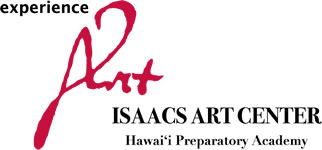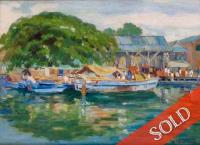William Twigg-Smith (1883-1950)
William Twigg-Smith (1883-1950) was a New Zealand-born American painter who lived most of his adult life in Hawaiʻi. Born in Nelson, New Zealand, he moved to the U.S. in his late teens, living first in San Francisco, where he studied painting with Evelyn Almond Withrow, and then in Chicago, where he worked with Harry M. Walcott at the School of the Art Institute. He became a naturalized U.S. citizen, and first visited Hawaiʻi in 1916.
Twigg-Smith trained for an art career at the Art Institute of Chicago, and it was while en-route there at the age of sixteen that he first visited Hawaiʻi. He returned in 1916 in time to team up with Lionel Walden and D. Howard Hitchcock on the famous Pan-Pacific Carnival dioramas exhibited in 1917. That year marked his first exhibit in Hawaii, in an inaugural show sponsored by the Hawaii Society of Artists.
Later in 1917 Twigg-Smith returned to France to work on army camouflage for World War I, then he returned permanently to Hawaiʻi in 1919. In 1923, he was hired to be a full time illustrator for the Hawaii Sugar Planters Association, forcing him to paint in his spare time, though he did mount a successful one-man show at the Honolulu Academy of Arts in 1927.
Though he primarily painted landscapes, Twigg-Smith varied his subject matter to include fishing activities, harbor and urban scenes, gardens, sugar cane fields, and of course, volcanoes. He was also a talented musician, and supported himself by playing the flute while in Chicago. For a number of years in Hawaii, he played second flutist with the Honolulu Symphony Orchestra.
In 1946, Twigg-Smith retired to Kona, where he would paint many of West Hawaii's striking settings until his death in 1950.


